-
×
 The Federal Code Blueprint 2023 2.0 By Jason White
1 × $23,00
The Federal Code Blueprint 2023 2.0 By Jason White
1 × $23,00 -
×
 15 Second Video Prospecting Machine By Attraction Marketing
1 × $62,00
15 Second Video Prospecting Machine By Attraction Marketing
1 × $62,00 -
×
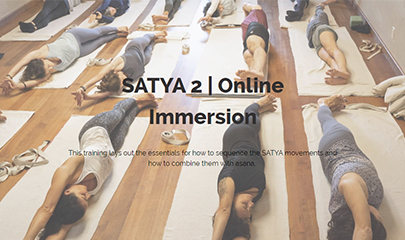 SATYA 2 - Online Immersion - January 2023 By Tias Little
1 × $225,00
SATYA 2 - Online Immersion - January 2023 By Tias Little
1 × $225,00 -
×
 Cognomovement An Energy Healing System With Bill McKenna and Liz Larson - The Shift Network
1 × $46,00
Cognomovement An Energy Healing System With Bill McKenna and Liz Larson - The Shift Network
1 × $46,00 -
×
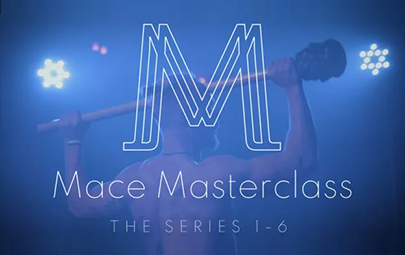 Mace Masterclass Series 1-6 By Harbert - Dutch Flow Academy
1 × $78,00
Mace Masterclass Series 1-6 By Harbert - Dutch Flow Academy
1 × $78,00 -
×
 Ultimate Collection 28 Courses - Make A Better Sex And Life By Gabrielle Moore
1 × $46,00
Ultimate Collection 28 Courses - Make A Better Sex And Life By Gabrielle Moore
1 × $46,00 -
×
 FAST CLASS: The Art of Filmmaking and Editing By Jeff Medford & Ross Hockrow
1 × $5,00
FAST CLASS: The Art of Filmmaking and Editing By Jeff Medford & Ross Hockrow
1 × $5,00 -
×
 Intermediate Herbal Course By The Herbal Academy
1 × $62,00
Intermediate Herbal Course By The Herbal Academy
1 × $62,00 -
×
 The Frozen Shoulder Program By Got Rom
1 × $23,00
The Frozen Shoulder Program By Got Rom
1 × $23,00 -
×
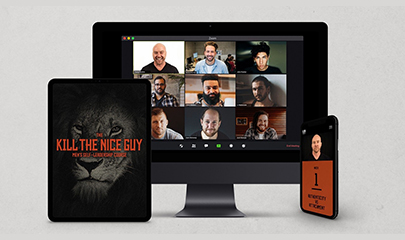 The Kill The Nice Guy - The Warrior By Traver Boehm
1 × $109,00
The Kill The Nice Guy - The Warrior By Traver Boehm
1 × $109,00 -
×
 Raise Your Money Vibration Program By Awesome Aj Academy
1 × $39,00
Raise Your Money Vibration Program By Awesome Aj Academy
1 × $39,00 -
×
 Human Design Business Kickstart Bundle 2024 By Becca Francis
1 × $78,00
Human Design Business Kickstart Bundle 2024 By Becca Francis
1 × $78,00 -
×
 Mobile HTML5 App and Web Development for Beginners By Stone River eLearning
1 × $6,00
Mobile HTML5 App and Web Development for Beginners By Stone River eLearning
1 × $6,00
Never Split the Difference: Beyond the Book by Chris Voss
$1.499,00 $5,00
SKU: KOB.59050P33nT3
Category: Personal Development
Tags: Beyond the Book, Chris Voss, Never Split the Difference, Voss
Never split the difference: beyond the book by Chris Voss – Digital Download!
Let’s embark on a captivating adventure to uncover remarkable insights that spark your curiosity and elevate your understanding
Never Split the Difference: Beyond the Book by Chris Voss
Overview

Never split the difference: beyond the book by Chris Voss
Understanding the dynamics of negotiation is vital in both personal and professional life, making it essential to explore effective techniques. Chris Voss’s book, Never Split the Difference, has become a modern classic, illuminating negotiation strategies that stem from his experiences as an FBI hostage negotiator. Voss emphasizes that the art of negotiation goes beyond mere tactics; it requires empathy, emotional intelligence, and the ability to read the subtle signs of human interaction.
By sharing case studies from high-stakes negotiations, Voss offers insights that can be applied in everyday situations, from salary discussions to resolving personal conflicts. At its core, the message is simple yet profound: negotiation isn’t about winning or losing; it is about creating agreements that respect and address the needs of all parties involved. The framework presented in the book equips individuals with the tools to navigate complex negotiations with confidence, highlighting the importance of human emotion in decision-making. This article delves deeper into Voss’s principles and techniques, exploring how they can enhance negotiation outcomes across various contexts.
Key negotiation techniques
Negotiation is often perceived as a battlefield where one party seeks to gain an edge over another; however, Chris Voss presents an alternative view that fosters collaboration and understanding. The essence of his negotiation philosophy is built around tactical empathy, mirroring, active listening, and labeling emotions. By mastering these techniques, negotiators can construct a foundation of trust and respect, allowing for more fruitful outcomes.
To effectively illustrate the value of these techniques, let’s analyze how each one contributes to the negotiation process:
- Tactical Empathy: The cornerstone of Voss’s approach, tactical empathy involves understanding the emotions of the other party without necessarily agreeing with them. This requires active listening and an ability to put oneself in the shoes of the counterpart, creating a rapport that facilitates open dialogue.
- Mirroring: This technique involves repeating the last few words the other party has said, slightly rephrased. By doing so, negotiators not only signal that they are actively listening but also encourage the other party to elaborate on their thoughts, bringing additional context into the discussion.
- Active Listening: This goes beyond simply hearing words; it involves interpreting tone, body language, and emotional cues. Engaging fully with the speaker demonstrates that the negotiator values their perspective, enhancing the likelihood of a positive dialogue.
- Labeling Emotions: Acknowledging and naming the emotions of the counterpart can create a sense of relief and validation. By saying phrases like, “It seems you’re feeling frustrated,” negotiators can diffuse tension and promote deeper discussions on underlying issues.
- Calibrated Questions: These open-ended questions invite the other party to engage thoughtfully. For instance, “How can we solve this issue together?” prompts collaboration rather than defensiveness, enhancing the chances of finding common ground.
This comprehensive approach, when applied systematically, can improve the negotiation experience, transforming it from a contentious encounter into a collaborative problem-solving exercise.
Tactical empathy and its importance
Tactical empathy is not just a technique; it is a mindset that fundamentally shifts the way individuals approach negotiations. By employing tactical empathy, a negotiator taps into the emotional landscape of the other party, enhancing interpersonal connections and forging a collaborative atmosphere. This fundamental philosophical shift communicates that the negotiation is not merely a battle for advantageous outcomes, but rather a shared journey towards mutual understanding.
Research highlights the effectiveness of embracing empathy in negotiations. Studies, such as those conducted by Harvard Business Review, argue that negotiators who practice tactical empathy report better outcomes and feel more satisfied with the process. By truly paying attention to emotional cues, negotiators can identify the real concerns and motivations of their counterparts, thereby framing their propositions in alignment with these needs.
Tactical empathy also lays the groundwork for trust. When individuals feel that their emotions are understood and validated, they are more likely to engage openly. For example, in a salary negotiation, acknowledging an employer’s budget constraints while expressing your own value creates a basis for more candid discussions. Rather than employing aggressive tactics, negotiators using tactical empathy can explore creative solutions and compromises that benefit both parties.
Furthermore, an empathetic approach can enhance long-term relationships. By prioritizing understanding over winning, negotiators can cultivate rapport, leading to improved cooperation in future interactions. This is especially important in business negotiations, where ongoing partnerships can significantly impact success.
In summary, tactical empathy is a powerful tool that can transform negotiations from contentious confrontations into collaborative conversations. By cultivating this emotional intelligence, negotiators set the stage for more favorable outcomes, ultimately fostering relationships built on trust and mutual respect.
Mirroring and active listening
In negotiations, the ability to connect with the other party is crucial, and this is where mirroring and active listening come into play. Mirroring involves reflecting the other person’s words or physical gestures, while active listening ensures that the negotiator engages fully with the speaker’s message. Together, these techniques create an environment of rapport that can significantly enhance the negotiation process.
Mirroring is a subtle yet powerful technique. It involves repeating or paraphrasing the last few words spoken by the counterpart, perhaps with a slight inflection. Psychologically, this reflects the natural human inclination toward connection and similarity. For instance, when negotiating a contract and the other party states a specific requirement, paraphrasing that requirement shows attentiveness and prompts them to elaborate further. It’s akin to a dance; when one partner moves fluidly, the other responds in kind, creating an atmosphere where ideas flow more freely.
On the other hand, active listening goes beyond just hearing words; it encompasses understanding underlying emotions and intentions. Active listening involves nodding, maintaining eye contact, and using affirming verbal cues like “I see” or “That makes sense.” This practice encourages the other party to open up, revealing not only their surface-level arguments but also their deeper motivations and concerns.
Combining both mirroring and active listening can transform a negotiation from a one-sided struggle into a collaborative dialogue. By making the other party feel safe and heard, negotiators can foster a sense of cooperation. This is especially effective in high-stakes situations where emotions may run high; showing genuine understanding can counteract defensiveness and create pathways to resolution.
In effect, by mastering mirroring and active listening, negotiators arm themselves with tools to improve communication, enhance empathy, and ultimately achieve more satisfactory results. This dual approach helps in transforming potential conflict into constructive dialogue, demonstrating that successful negotiation is as much about emotional connections as it is about logical reasoning.
The power of labeling emotions
One of the more profound yet often underappreciated techniques discussed by Chris Voss is the power of labeling emotions. Labeling involves acknowledging the feelings of the other party during negotiations, demonstrating awareness of their emotional state. This simple yet effective technique serves to validate the other party’s experiences, promote empathy, and pave the way for constructive discussions.
Consider a scenario where a client appears to be agitated about the timeline of a project. Instead of dismissing their concerns, a negotiator might say, “It seems like you’re feeling frustrated about the deadlines.” This labeling acknowledges the emotion and allows the client to feel heard. By naming the emotion, the negotiator builds rapport, encouraging the client to elaborate on their concerns.
Studies have shown that labeling emotions within communication can help shift the listener’s perception, moving them from a purely emotional reaction to a more rational response. For example, research indicates that when individuals are prompted to articulate or recognize their emotions, they engage parts of the brain associated with reasoning, reducing the intensity of negative feelings. This shift can effectively defuse a tense situation during negotiations.
Labeling can also function as a catalyst for problem-solving. When emotions are acknowledged, it creates a platform where the parties can delve deeper into the issues at hand without the hindrance of defensiveness. This cooperative spirit encourages negotiators to collaborate rather than compete, ultimately leading to mutual understanding and more favorable outcomes.
In summary, the power of labeling emotions is an indispensable aspect of effective negotiation. It allows negotiators to not only connect on an emotional level but also to create a space where collaborative solutions can emerge. Recognizing and articulating emotions transforms the negotiation atmosphere, enabling participants to move beyond positional stances to explore shared interests and needs.
Negotiation strategies
Voss emphasizes that successful negotiation requires more than just a set of tactics; it demands an understanding of human behavior, emotions, and strategic thinking. Here, we explore various negotiation strategies extensively discussed in Never Split the Difference, including their impact on outcomes and applicability in real-world situations.
- The Ackerman Bargaining Method: This method provides a structured process for making offers and counteroffers. It involves setting an anchor offer at about 65% of the target price, then gradually increasing subsequent offers to heighten perceived value. For example, if your goal is to sell a product for 100 VND, the initial offer might start at 65 VND, rising through increments of 15% each time until reaching the target.
- Calibrated Questions: These open-ended questions, beginning with “how” or “what,” are designed to steer the dialogue in a more fruitful direction. For example, asking “What would make this deal work for you?” positions the other party as a collaborator, increasing the likelihood of discovering mutual interests.
- The “That’s Right” moment: This refers to the point in negotiation where the other party acknowledges that you understand their position completely. Achieving this moment solidifies trust and understanding, leading to favorable outcomes.
- The Importance of Timing: Knowing when to press forward and when to retreat is key to successful negotiations. Voss emphasizes the importance of leverage; recognizing when the other party feels cornered can present opportunities for better deals.
- Use of Silence: Silence can often be more powerful than words. By strategically employing pauses after asking a question, negotiators can allow the other party the space to reflect, often leading to deeper insights and valuable revelations.
- Creating a Sense of Urgency: By establishing plausible deadlines, negotiators can prompt quicker resolutions. However, this approach requires finesse; stakes must be framed realistically to avoid backlash or perceived manipulation.
Each of these strategies can be tailored to fit the context of a negotiation, whether in business discussions or personal agreements. By applying such methods with an emphasis on empathy and understanding, negotiators can facilitate productive conversations that work toward mutual benefit.
Calibrated questions for effective dialogue
Calibrated questions are a core technique emphasized by Voss for creating effective dialogue during negotiations. These types of questions invite the other party to engage more deeply and explore their perspectives, thereby unveiling essential motivations that may not be explicitly stated. The hallmark of calibrated questions is their open-ended nature, promoting a more collaborative conversation rather than a combative exchange.
Examples of calibrated questions include, “How can we work together to make this happen?” or “What do you see as the challenges here?” Such prompts empower the other party to take ownership of the dialogue, guiding them into problem-solving mode. This diverges from the typical back-and-forth style of negotiation, where each party may focus on winning rather than collective understanding.
Calibrated questions serve several functions in negotiations:
- Defusing Tension: By asking open-ended questions, negotiators can shift the focus away from confrontational arguments. Instead of presenting demands, they encourage discussions about needs and concerns.
- Gathering Valuable Information: Calibrated questions elicit deeper insights into the priorities and worries of the other party, providing information that can be pivotal in finding common ground.
- Empowerment: These questions encourage involvement from the other party, making them feel valued and respected. This empowerment fosters a more conducive atmosphere for collaboration.
- Encouraging Creative Solutions: Open-ended questions can lead to brainstorming potential solutions that may not have been initially considered, driving the negotiation toward innovative resolutions.
- Enhancing Engagement: Calibrated questions keep the conversation flowing and prevent it from stagnating, ensuring active participation from both sides.
The effectiveness of calibrated questions lies not only in the questions themselves but also in how they encourage a shift from positional bargaining to collaborative problem-solving. By integrating this approach into their negotiations, individuals can foster an interactive dialogue, enriching discussions and ultimately driving toward shared success.
The Ackerman bargaining method
The Ackerman Bargaining Method is a structured negotiation strategy designed to maximize outcomes through calculated, incremental offers. This technique provides a foundation for approaching negotiations with clear parameters and psychological insight, allowing negotiators to navigate complex discussions more effectively.
- Initial Offer: Begin by making an offer at about 65% of your target price. This initial offer serves as an anchor, creating a reference point for subsequent negotiations. For example, if your target is 1,000 VND, starting with an offer around 650 VND sets a context for further discussion.
- Subsequent Offers: The method follows a systematic progression for offers:
- Second offer: 85% of the target price
- Third offer: 95% of the target price
- Final offer: 100% (ideal outcome)
- Each step allows for psychological maneuvering that benefits both sides and demonstrates a willingness to negotiate while maintaining focus on the target.
- Precision in Offers: When making offers, use precise numbers rather than round figures. This creates an impression of thorough analysis and seriousness about the offer, giving the other party clarity and confidence that you are at your limit.
- Incorporating Calibrated Questions: After each offer, employing calibrated questions helps elicit insights regarding the other party’s reactions. Questions such as, “How would you feel about this counteroffer?” encourage engagement and promote deeper dialogue around the negotiation.
- Leverage Reciprocity: The method also incorporates the principle of reciprocity. When concessions are made, it’s customary to expect corresponding concessions from the other party. This principle reinforces cooperative behavior and helps facilitate agreement.
The Ackerman Method not only provides a systematic approach to making offers but also establishes a psychological framework that encourages constructive dialogue. By understanding human responses to offers and counteroffers, negotiators can navigate discussions toward more favorable outcomes while preserving collaborative relationships.
Handling deadlines in negotiations
Deadlines can play a significant role in influencing negotiation dynamics, often affecting decision-making processes and the urgency felt by the parties involved. Here are key strategies for managing deadlines effectively during negotiations to optimize outcomes:
- Establish Clear Timelines: Clearly communicate timelines from the start of negotiations. This sets expectations for both parties and creates momentum that can be beneficial in reaching an agreement.
- Creating a Sense of Urgency: Utilize deadlines to instill urgency in the negotiation process. However, it’s vital to balance urgency without putting undue pressure on the other party. A compelling rationale behind the timeline can facilitate quicker decisions without creating resistance.
- Optional Flexibility: While having deadlines is critical for maintaining focus, negotiators should also remain flexible. If extending a deadline leads to better discussions or an improved deal, being adaptable can yield greater long-term benefits.
- Leveraging Deadlines as a Tool: Instead of viewing deadlines strictly as constraints, leverage them as negotiating tools. For instance, if the other party asks for an extension, counter with a request for additional concessions based on the timeline revision.
- Understanding the Other Party’s Constraints: Appreciating the underlying reasons for the other party’s deadline can enrich discussions and lead to solutions that align with both parties’ objectives. This empathetic approach fosters cooperation and diminishes adversarial behavior.
By strategically handling deadlines in negotiations, individuals can optimize their negotiation strategies, increase the likelihood of achieving favorable outcomes, and enhance relationships based on mutual respect. This method also brings to light the importance of understanding timing and context in negotiations, emphasizing the psychological dimension embedded in the process.
Psychological insights
Negotiation is not solely about the exchange of offers and counteroffers; it is also deeply rooted in psychological dynamics. Chris Voss articulates that understanding human emotions and perceptions plays a crucial role in successful negotiations. Here are some of the psychological insights highlighted in Never Split the Difference:
- Emotional Intelligence: Recognizing that emotions drive decisions is critical. By understanding the emotional landscape of the negotiation, individuals can tailor their approaches to address concerns and foster collaboration more effectively.
- The Power of “No”: Contrary to the common belief that “yes” is the goal of negotiations, Voss suggests that “no” often opens the door to deeper discussions. Acknowledging discomfort can lead to clarifying needs and generating mutually satisfying solutions.
- The Value of Tactical Empathy: Demonstrating understanding of the other party’s emotions builds trust and rapport, creating an environment conducive to effective negotiation. This approach ensures that discussions remain focused on shared objectives rather than emotional blocks.
- Labeling Emotions: When negotiators can effectively label the emotions of the other party, they create a significant shift from emotional response to logical discourse. This enables a more rational conversation that can lead to positive outcomes.
- Mirroring for Connection: The technique of mirroring not only fosters rapport but also taps into our innate desire for similarity. This psychological aspect of negotiation helps create cohesion and reduces defensiveness.
- Understanding Fairness: Fairness weighs heavily in negotiations. Individuals will often refuse proposals perceived as unfair, even if they are beneficial. Negotiators must frame their proposals to convey equity, persuading parties to accept offers aligned with their perceived values.
By incorporating these psychological insights into their negotiation styles, individuals can articulate conversations that resonate with the emotional fabric of interactions. Understanding how emotions influence decisions lays the foundation for positive engagement and successful negotiations.
Understanding human emotion in negotiation
Emotions play an invaluable role in negotiations, affecting not only decision-making but also communication and relationship-building. Chris Voss encourages negotiators to embrace the emotional dimension of interactions to enhance outcomes. Here’s a deeper look at understanding human emotion in negotiation:
- Awareness of Emotional Triggers: Recognizing emotional triggers in oneself and in the other party can significantly impact how negotiations unfold. For instance, if a negotiator senses anxiety in their counterpart over a particular point, acknowledging this fear can create a more conducive environment for problem-solving.
- Utilizing Emotion to Drive Dialogue: Leveraging emotional responses can steer the negotiation toward productive discussions. For instance, expressing enthusiasm or urgency about a project can engage the other party more deeply, inspiring them to consider compromises aligned with these emotions.
- Fostering Comfort and Trust: Creating emotional safety is crucial. When negotiators design their interactions to mitigate fear and defensiveness, they pave the way for more open conversations and a willingness to explore solutions.
- Identifying Shared Values: Exploring shared emotional investments can create a stronger bond between negotiating parties. Finding commonality not only enhances rapport but can also shift the dynamics toward collaborative endeavors.
- Importance of Validation: Validating the emotions of others by acknowledging their frustrations or concerns can diffuse tension. This practice fosters a culture of understanding, making it easier for negotiators to address disagreements without escalating conflicts.
Using these insights to navigate emotions in negotiation can significantly enhance the efficacy of discussions while fostering an atmosphere of respect and collaboration. Ultimately, recognizing the pivotal role emotions play allows negotiators to facilitate fruitful dialogues that not only produce results but also strengthen relationships.
Overcoming barriers of ‘yes’ and embracing ‘no’
In negotiations, traditional wisdom often promotes a relentless pursuit of yes. However, Chris Voss teaches that navigating through “no” can lead to more fruitful discussions. Embracing the power of “no” can create a deeper understanding of positions and needs, ultimately guiding conversations toward meaningful resolutions.
- Reframing “No” as a Starting Point: Rather than viewing “no” as a barrier, it should be seen as an opportunity for clarification. When parties express rejection, it can evoke discussions that unc**********lying concerns, enabling negotiators to address them directly.
- Building Comfort with Rejection: The fear of rejection often paralyzes negotiators. By practicing acceptance of “no,” individuals can foster resilience and navigate adversities with a more strategic mindset. This helps create a constructive dialogue that promotes better understanding.
- Leveraging “No” for Clarity: As negotiations progress, “no” can highlight boundaries, enabling clearer definitions of desires and concerns. For example, if a negotiator hears “no” regarding a proposal, they can probe further, asking what factors might drive a different response.
- Using “No” for Empowerment: Embracing “no” can empower both parties. When individuals feel safe to reject offers, they may be more comfortable articulating their desires and constraints, fostering a more open and cooperative dialogue.
- Navigating Barriers to Agreement: Acknowledging and discussing barriers to agreement can pave the way for solutions. By framing “no” positively, negotiators can engage in deeper exploration of issues, steering the conversation toward creative solutions.
By reframing “no” as a pathway to dialogue rather than an obstacle, negotiators can break down barriers, fostering an environment conducive to collaborative problem-solving. This shift in perception creates opportunities for developing mutually beneficial agreements while fortifying relationships.
The role of fairness in negotiations
Fairness emerges as a central theme in Voss’s negotiation philosophy. The individual’s perception of fairness can dramatically influence their willingness to engage or concede during negotiations. By understanding and incorporating the element of fairness, negotiators can facilitate more effective discussions.
- Crafting Offers that Align with Fairness: Negotiators must be aware of the other party’s preconceptions of fairness. Unrealistic or one-sided offers often lead to rejection, even if they technically meet the needs of the other party. Presenting proposals that respect all parties’ interests, and framing them as fair, increases the likelihood of acceptance.
- Utilizing Fairness to Build Trust: The belief that negotiations are conducted in good faith can alleviate tensions and enhance collaboration. By communicating transparency and honesty, negotiators establish trust, laying a foundation for successful outcomes.
- Understanding Subjective Perspectives: Fairness is subjective. Recognizing that each party brings a unique viewpoint to discussions enables negotiators to navigate differences more effectively. Exploring individual perceptions can lead to compromises that satisfy both parties without feelings of exploitation.
- Demonstrating Willingness to Compromise: When one party exhibits a genuine willingness to find equitable solutions, it encourages reciprocity and cooperation from the other side. This commitment to fairness fosters an environment where negotiations can progress organically.
- Framing Conversations Around Values: Effective negotiators often tether their proposals to shared values, which resonate with both parties’ perceptions of fairness. This connection strengthens negotiations by showing that all parties are aiming toward common goals rather than merely positional bargaining.
Incorporating fairness into negotiation dialogues creates an atmosphere where parties feel respected, fostering collaboration and ultimately leading to agreements that benefit everyone involved. This understanding enhances the negotiation experience and results in stronger, long-lasting relationships.
Practical applications
The techniques and strategies encompassed within Voss’s negotiation philosophy are not only theoretical; they hold real-world applicability across various domains. From navigating business negotiations to resolving personal disputes, these practices can lead to favorable outcomes. Below are practical applications of Voss’s principles:
- Business Negotiations: In high-stakes business situations such as contract discussions or mergers, employing tactical empathy can bridge gaps between differing parties. By attentively listening and employing calibrated questions, deals can evolve through mutual understanding rather than competitive stances.
- Conflict Resolution: When handling interpersonal conflicts, using emotional labeling can diffuse tensions. For instance, acknowledging a spouse’s feelings during a disagreement can lead to more empathetic discussions that foster healthier relationships.
- Sales Negotiations: Sales professionals can effectively leverage mirroring and active listening to build rapport with clients. Adapting language and behavior to align with the client promotes trust and increases the likelihood of closing deals.
- Salary Negotiations: When negotiating salaries, Voss’s techniques provide tools for effective engagement. By applying tactical empathy and presenting well-researched arguments framed through shared interests, candidates can advocate for equitable outcomes.
- Negotiation Training: Organizations can enhance their negotiation training programs by incorporating Voss’s methods. By fostering skills in tactical empathy, active listening, and emotional intelligence, team members can approach negotiations with confidence and effectiveness.
Through these practical applications of Voss’s principles, individuals can harness the power of effective negotiation techniques, enhancing their interpersonal skills and achieving better results across various facets of life.
Business negotiations
Business contexts present unique challenges that can greatly benefit from negotiation techniques. Voss’s strategies provide frameworks for both formal negotiations and day-to-day interactions among colleagues or stakeholders. Here are key takeaways for applying Voss’s principles in business negotiations:
- Understanding Stakeholder Perspectives: Successful business negotiations necessitate understanding various stakeholders’ interests and concerns. By practicing tactical empathy, negotiators can foster environments where diverse viewpoints are acknowledged and valued.
- Utilizing Calibrated Questions: In meetings or proposals, using calibrated questions invites dialogue and collaboration. For instance, asking, “What can we achieve together?” encourages participation from all parties and can unveil solutions more readily.
- Testing Understanding with Active Listening: Incorporating active listening into business discussions ensures that all parties feel heard. When team members feel validated, it strengthens relationships and can create a more motivating environment.
- Embracing Strategic “No”: Recognizing that a “no” from a partner does not signal failure can enhance resilience in business negotiations. Instead, each “no” can become an entry point for deeper discussions about concerns and priorities.
- Negotiating Fairness in Contracts: Ensuring that contractual terms are framed as equitable strengthens partnerships. By clearly explaining the rationale behind offers, negotiators can reinforce perceptions of fairness, thus increasing acceptance and satisfaction.
By integrating these principles into the business negotiation process, companies and professionals can foster a culture of collaboration and trust, leading to more effective resolutions and stronger partnerships over time.
Salary negotiations and career advancement
Salary negotiations can be daunting, yet employing Chris Voss’s negotiation principles can maximize effectiveness and confidence during the process. Here’s how individuals can navigate salary discussions and career advancements using Voss’s techniques:
- Research and Preparation: Enter salary negotiations armed with market data and salary benchmarks. Understanding your worth enhances credibility and enables effective negotiation positioning.
- Practicing Tactical Empathy: Show understanding of an employer’s budget constraints while articulating the value you bring to the organization. Creating a narrative around contributions fosters a more open dialogue regarding compensation.
- Using Calibrated Questions: Phrasing questions like, “What factors influence salary decisions here?” invites the employer to express constraints while fostering a collaborative atmosphere to explore different salary parameters.
- Establishing “That’s Right” Moments: Aim for moments of mutual agreement during salary negotiations, ensuring that the employer acknowledges your contributions. When they respond with “that’s right,” it indicates alignment and increases the chances of a successful negotiation.
- Building Long-term Relationships: Salary negotiations are often the first step in a more extended collaboration. By focusing on establishing rapport and transparency, individuals can enhance long-term career advancement prospects.
By applying these strategies to salary negotiations, individuals can bolster their chances of advocating effectively for the compensation they deserve, ultimately contributing to their career progression.
Conflict resolution in personal life
Negotiation skills extend far beyond the business realm; they are equally valuable in personal conflicts. The principles outlined in Never Split the Difference can empower individuals to navigate misunderstandings and cultivate healthier relationships. Here are key strategies for conflict resolution in personal life:
- Labeling Emotions: Acknowledging emotions during disagreements can create an environment where individuals feel heard. Saying, “I can see that you’re upset,” opens the door to constructive conversation and helps diffuse heightened emotions.
- Utilizing “No” as a Tool: In personal discussions, embracing “no” can clarify boundaries and enable a deeper understanding of each party’s perspectives. Phrasing questions to invite “no” prompts further exploration of concerns and helps steer discussions toward compromise.
- Fostering Clear Communication: Good communication underpins successful conflict resolution. By employing active listening and mirroring, parties can create a dialogue where all individuals feel validated.
- Exploring Collaborative Solutions: Engaging in joint problem-solving by asking calibrated questions leads to mutually satisfactory outcomes. Phrasing questions like “What can we do to solve this together?” prompts partners to brainstorm possibilities collaboratively.
- Constructing Agreements: Successful conflict resolution often results in agreements that respect the interests of both parties. Being clear about expectations and compromises ensures future conflicts don’t arise from misunderstandings.
By implementing these techniques in personal lives, individuals can cultivate healthier relationships, navigate conflicts effectively, and promote understanding and collaboration over discord.
Real-world examples
Real-world applications of Voss’s principles uncover the effectiveness of negotiation techniques in diverse scenarios. The implementation of Never Split the Difference strategies spans various contexts, leading to breakthroughs in negotiation experiences. Here are several examples:
- High-Stakes Hostage Situations: As a former FBI negotiator, Voss worked on numerous hostage cases. In one instance, by employing tactical empathy, he successfully calmed an agitated individual threatening to harm hostages. Through careful listening and emotional validation, the negotiator was able to establish rapport and ultimately facilitate a peaceful resolution.
- Corporate Salary Negotiations: Numerous professionals have utilized Voss’s strategies during salary discussions, resulting in favorable outcomes. By applying calibrated questions and mirroring, candidates have effectively transformed rigid salary conversations into collaborative dialogues, often securing higher compensation than initially anticipated.
- Team Conflict Resolution: Teams facing internal conflicts have successfully implemented Voss’s conflict resolution techniques. By labeling emotions and employing active listening, members were able to express grievances openly, leading to more productive discussions and reinforcing team cohesion.
- Business Partnerships: In business negotiations, organizations successfully navigating mergers have adopted Voss’s principles. By leveraging calibrated questions and mutual understanding, they have been able to align goals, expectations, and resources while building collaborative frameworks that benefit both organizations.
- Personal Relationship Conflicts: Couples experiencing misunderstandings have applied Voss’s techniques in their discussions. By labeling each other’s emotions and practicing active listening, partners have been able to reduce defensiveness and reinforce emotional connections, leading to constructive resolutions.
These real-world examples demonstrate the transformative power of Voss’s negotiation principles, illustrating their versatility and effectiveness across various contexts. By employing these strategies, individuals can foster more productive discussions, drive meaningful resolutions, and enhance relationships, whether in high-stakes negotiations or everyday interactions.
High-stakes hostage negotiations
High-stakes hostage negotiations demand a unique set of skills and emotional intelligence that are encapsulated in Voss’s principles. The high-pressure environment often features individuals in distress, which can complicate the negotiation process. Here are notable insights derived from real-life high-stakes situations:
- The Iran Hostage Crisis (1979-1981): During this prolonged standoff, negotiators faced extreme emotions, political complexities, and heightened tensions. Mediators leveraged Voss’s techniques, emphasizing tactical empathy and building rapport to maintain communication, ultimately ensuring the safety of hostages through creative diplomacy.
- The Waco Siege (1993): FBI negotiators took on the emotionally charged situation involving the Branch Davidians. By applying tactical empathy and engaging in active listening, they built a connection with the group, which ultimately led to a peaceful resolution concerning the surrender of some members.
- Moscow Theatre Hostage Crisis (2002): In this crisis, negotiators struggled to maintain calm while balancing the lives of hostages with the demands of armed captors. The application of Voss’s principles, particularly emotional validation and strategic questioning, played a vital role in managing the complex dynamics and ultimately contributed to the resolution.
- Somali Pirates: Voss applied his negotiation techniques in ransom scenarios involving Somali pirates. By understanding their motivations and employing strategic empathy, he crafted approaches that addressed both parties’ needs while safeguarding the people involved.
- Real-Life Applications of Emotional Intelligence: Across various examples, the successful outcomes frequently stem from leveraging emotional intelligence recognizing, validating, and responding to the feelings of others. This personal connection served to diffuse tensions and create solid pathways toward resolution.
These high-stakes negotiations exemplify how Voss’s principles provide powerful frameworks that can be adapted to numerous sensitive situations. The ongoing emphasis on emotional understanding not only saves lives but also highlights the profound impact of human connection in even the most challenging circumstances.
Case studies illustrating Voss’s principles
Understanding the practical applications of Chris Voss’s principles is benefitted through case studies that highlight success and efficacy in negotiations. Each case illustrates foundational techniques, revealing how these methods lead to positive negotiated outcomes. Here are notable examples:
- The Case of Jeffrey Schilling: This instance involved a hostage who was successfully released after his abductors felt their emotions were understood. The negotiation team, employing mirroring and labeling techniques, fostered a connection that led to Schilling’s eventual release without the need for a ransom.
- Bank Robbery Incident: During a standoff, negotiators initially misinterpreted the robbers’ claims, assuming they indicated surrender. Employing an accurate understanding of human behavior, they utilized controlled pauses to encourage dialogue while successfully de-escalating tensions. This approach led to the safe release of hostages, reinforcing the significance of perception in negotiations.
- Confrontation with Armed Fugitives: In this situation, negotiators engaged with three armed fugitives through a door, utilizing labeling to acknowledge their fears surrounding law enforcement. By validating their concerns, the negotiators created a safe environment that ultimately led to the peaceful surrender of the suspects.
- Crisis Hotline: On a crisis hotline, Voss found that allowing callers to express “no” provided them with a sense of control. This acknowledgment shifted the dynamic from combative to cooperative, leading to constructive dialogues that fostered resolution.
- Identifying Black Swans: In one hostage negotiation, negotiators encountered unexpected behavior from a hostage-taker. Recognizing the presence of “black swans” unknown pieces of information enabled negotiators to adapt their strategies dynamically, ultimately achieving a favorable result.
These case studies underscore the versatility and effectiveness of Voss’s negotiation strategies across a range of circumstances. By illustrating real-world applications of these techniques, they reveal the profound impact of emotional intelligence and situational awareness in achieving successful negotiations.
Lessons learned from the FBI experience
The lessons learned from Chris Voss’s time with the FBI serve as indispensable insights into successful negotiation tactics that extend beyond high-stakes scenarios. The breadth of experiences Voss encountered provides valuable takeaways for professionals from diverse fields. Here are key lessons that resonate throughout his negotiations:
- Emotional Intelligence is Key: Engaging with emotional undercurrents within a negotiation is paramount. Recognizing emotions not only fosters deeper connections but can lead to more favorable outcomes. By prioritizing emotional awareness, negotiators can build strong relationships that pave the way for future collaborations.
- Tactical Empathy as an Advantage: The importance of tactical empathy cannot be overstated. This skill allows negotiators to transcend traditional paradigms and instead engage connections that enable them to drive discussions toward advantageous resolutions.
- The Value of Connection: Establishing strong rapport can dramatically alter the course of negotiations. Genuine connections serve as the foundation for trust, reinforcing open dialogue even in challenging situations.
- “No” is a Starting Point: Embracing rejection as beneficial allows negotiators to recalibrate discussions and explore the vital interests underlining positions. An environment where individuals feel free to express “no” fosters authenticity and encourages productive problem-solving.
- Continuous Adaptation: Flexibility in strategy and readiness to adapt presents enormous advantages in dynamic negotiation scenarios. By remaining receptive to new information, negotiators can craft responses that are acutely relevant to the unfolding discussion.
These lessons serve as a guide for individuals seeking to enhance their negotiation proficiency, reinforcing the notion that effective negotiation extends beyond mere transactions to the cultivation of relationships built on mutual respect and understanding.
Conclusion and recommendations
Chris Voss’s Never Split the Difference presents a paradigm shift in negotiation strategies, emphasizing the integral role of emotional intelligence and empathy. By equipping individuals with proven techniques that foster understanding and collaboration, Voss enables negotiators to navigate complex interactions with confidence.
Key takeaways from Voss’s principles reveal that successful negotiation relies on emotional engagement, cooperation, and a willingness to understand the perspectives of others. The emphasis on mirroring, active listening, labeling emotions, and calibrated questions can transform negotiations into collaborative conversations, yielding satisfactory outcomes for all parties involved.
For individuals looking to refine their negotiation skills, recommendations abound. Practicing tactical empathy in all interactions, using active listening techniques, and reinforcing the value of clear communication will ultimately aid in effective negotiations. Engaging in role-playing or seeking focused training programs can also significantly bolster proficiency within negotiating environments.
In practical terms, individuals should continually assess personal negotiation experiences, learning from each interaction and integrating Voss’s teachings into their approaches. By understanding that mastery of negotiation is a continuous journey, individuals can cultivate strong interpersonal connections that lead to mutually beneficial agreements.
In conclusion, Voss’s principles hold the potential to enhance negotiation outcomes across various contexts. By embracing these strategies, individuals can foster collaborative environments, navigate complex conversations, and establish lasting relationships transforming the way they approach negotiation altogether.
Long-term benefits of mastering negotiation skills
Mastering negotiation skills, as articulated by Voss, offers profound long-term benefits extending across personal and professional domains. The ability to negotiate effectively is a cornerstone of successful communication, resource management, and conflict resolution. Here’s an overview of the long-lasting advantages that stem from mastering these skills:
- Enhanced Conflict Resolution: Effective negotiators possess the tools to navigate conflicts not only during active discussions but also in resolving issues proactively. By employing empathy and active listening, individuals enhance their ability to address grievances before they escalate, fostering healthy relationships.
- Improved Interpersonal Relationships: The foundations of strong relationships are built upon mutual understanding and respect. By applying negotiation principles, individuals can cultivate deeper connections, enhancing collaboration and trust across personal and professional spheres.
- Increased Career Advancement Opportunities: Professionals skilled in negotiation are often seen as valuable assets within their organizations. By effectively negotiating promotions, salary increases, and project opportunities, individuals can accelerate their career progression.
- Strengthened Decision-Making Skills: The process of negotiation encourages individuals to consider multiple viewpoints and evaluate decisions holistically. This experience fosters critical thinking skills, enabling more informed and strategic decision-making in various contexts.
- Lasting Societal Impact: Skilled negotiators can effect change beyond personal circles. By employing negotiation techniques in community settings, individuals can advocate for collective interests and promote collaboration between different social groups, facilitating harmonious coexistence.
Mastering negotiation skills proves essential not only for personal and professional outcomes but also for enriching broader social interactions. As individuals invest effort into developing these capabilities, they pave the way for fulfilling, productive interactions that resonate over the long term.
Resources for continued learning and improvement
To continue improving negotiation skills, numerous resources and opportunities are available for individuals seeking to deepen their understanding of Voss’s principles and enhance their capabilities in structured negotiation. Here reflects a set of recommended avenues for ongoing learning:
- Online Courses and Workshops: Platforms like Coursera and LinkedIn Learning provide courses focused on essential negotiation skills. Specific offerings may include practical applications of Voss’s strategies, enabling learners to engage in real-world scenarios.
- Books on Negotiation and Communication: Expanding reading lists by diving into texts that complement Voss’s teachings can solidify understanding. Recommended titles include Getting to Yes by Roger Fisher and Influence: The Psychology of Persuasion by Robert Cialdini, enriching perspectives on negotiating contexts.
- Negotiation Masterclasses and Webinars: Participating in masterclass sessions led by negotiation experts including Voss provides immersive learning opportunities. Webinars hosted by organizations focusing on negotiation techniques often deliver valuable insights.
- Practice through Role-Playing: Engaging in role-playing exercises with peers can enhance negotiation skills through hands-on experience. Simulating negotiations reinforces techniques and instills confidence in applying skills during real-life situations.
- Networking and Discussion Groups: Joining forums, discussion groups, or professional organizations allows like-minded individuals to exchange experiences and learning. Networking offers fresh perspectives and encourages collaborative growth.
- Self-Reflection and Analysis: After each negotiation experience, individuals should take the time to reflect on successes and areas for improvement. Seeking feedback from peers can enhance self-awareness and contribute to ongoing growth.
By actively pursuing these resources and opportunities, individuals can continue to refine their negotiation skills, grounded in the principles laid out by Chris Voss. Thus, they establish a pathway toward more effective, productive interactions, ultimately driving personal and professional success.
In summary, the insights drawn from Never Split the Difference by Chris Voss offer individuals powerful frameworks that transcend traditional negotiation techniques. By focusing on emotional intelligence and fostering connections through empathy, negotiators can achieve better outcomes, enhance relationships, and navigate complexities with confidence.
Frequently Asked Questions:
Innovation in Business Models: We use a group purchase approach that enables users to split expenses and get discounted access to well-liked courses. Despite worries regarding distribution strategies from content creators, this strategy helps people with low incomes.
Legal Aspects to Take into Account: Our operations’ legality entails several intricate considerations. There are no explicit resale restrictions mentioned at the time of purchase, even though we do not have the course developers’ express consent to redistribute their content. This uncertainty gives us the chance to offer reasonably priced instructional materials.
Quality Control: We make certain that every course resource we buy is the exact same as what the authors themselves provide. It’s crucial to realize, nevertheless, that we are not authorized suppliers. Therefore, the following are not included in our offerings: – Live coaching sessions or calls with the course author.
– Entry to groups or portals that are only available to authors.
– Participation in closed forums.
– Straightforward email assistance from the writer or their group.
Our goal is to lower the barrier to education by providing these courses on our own, without the official channels’ premium services. We value your comprehension of our distinct methodology.
Be the first to review “Never Split the Difference: Beyond the Book by Chris Voss” Cancel reply
You must be logged in to post a review.
Related products
Personal Development
Training the Electric/Magnetic Lines of Force with Movement By Sixty Skills
Personal Development
Personal Development
The Performance Stretch System Level 1 By The Stretch Therapists
Personal Development
Human Design Business Kickstart Bundle 2024 By Becca Francis
Personal Development
Online – The Demartini Values Training Program – USA 2020 (Videos Only) By Dr John Demartini
Personal Development
Persuasion In Action Total Immersion Video Footage Collection By Ross Jeffries
Personal Development
Cognomovement An Energy Healing System With Bill McKenna and Liz Larson – The Shift Network



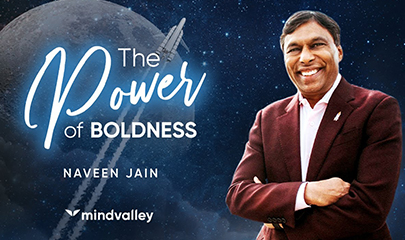




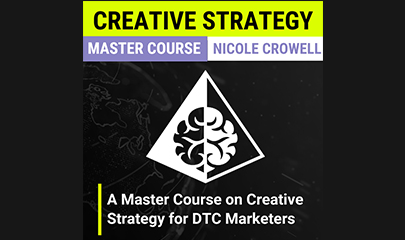

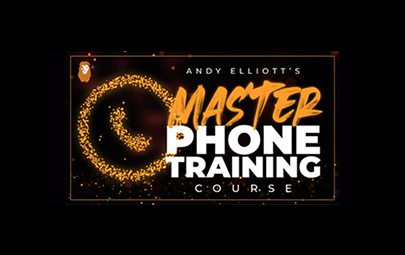






Reviews
There are no reviews yet.